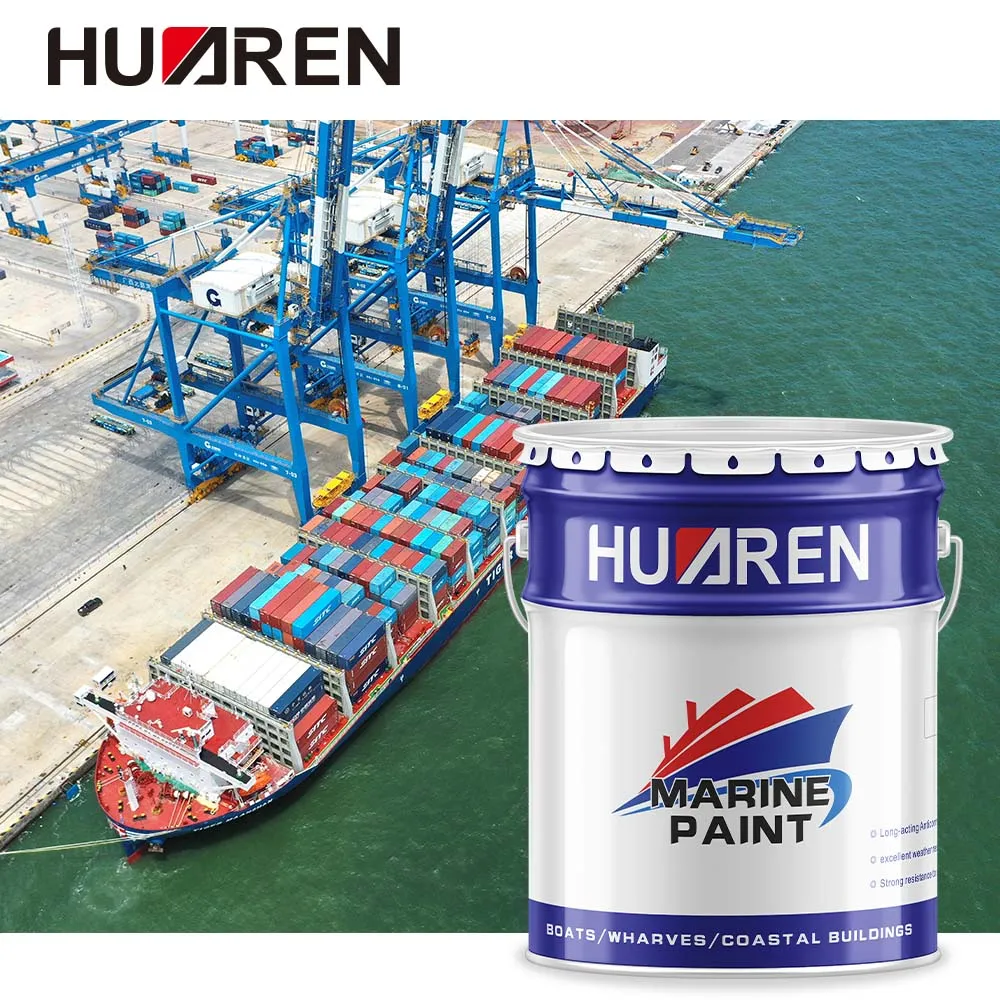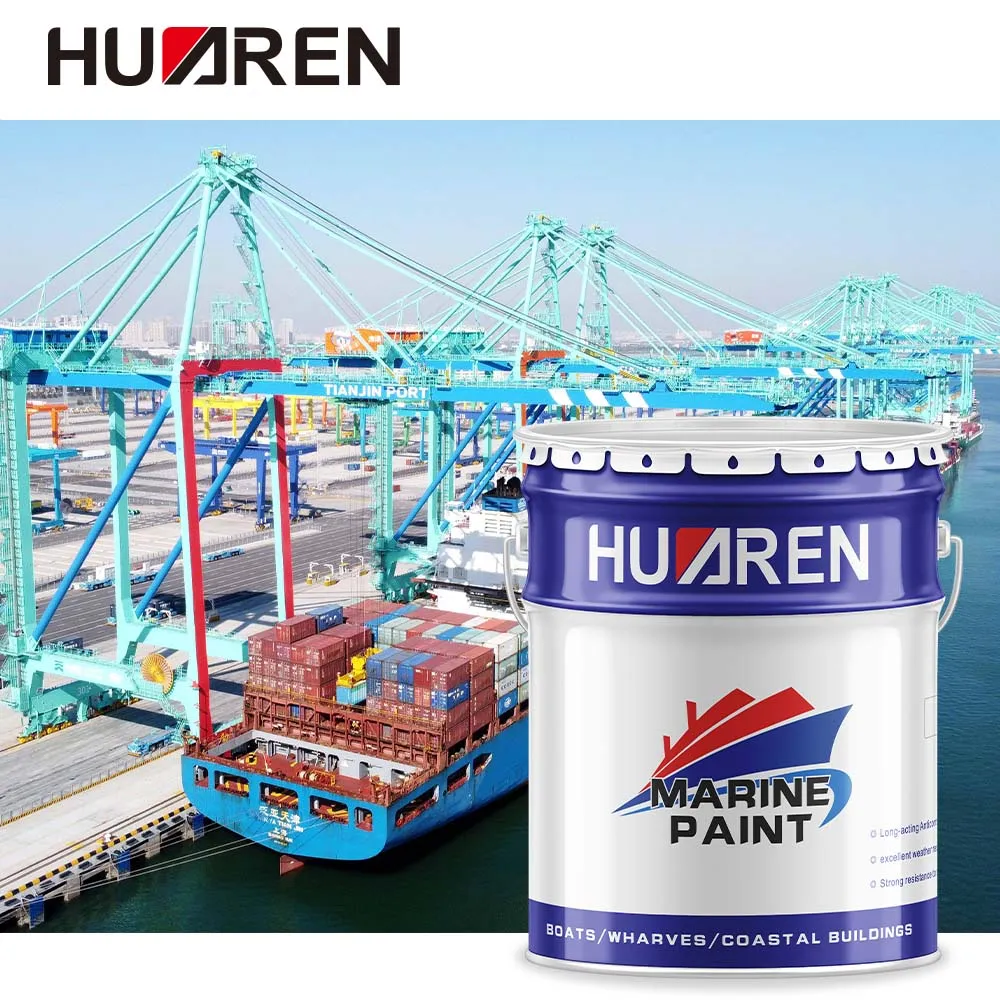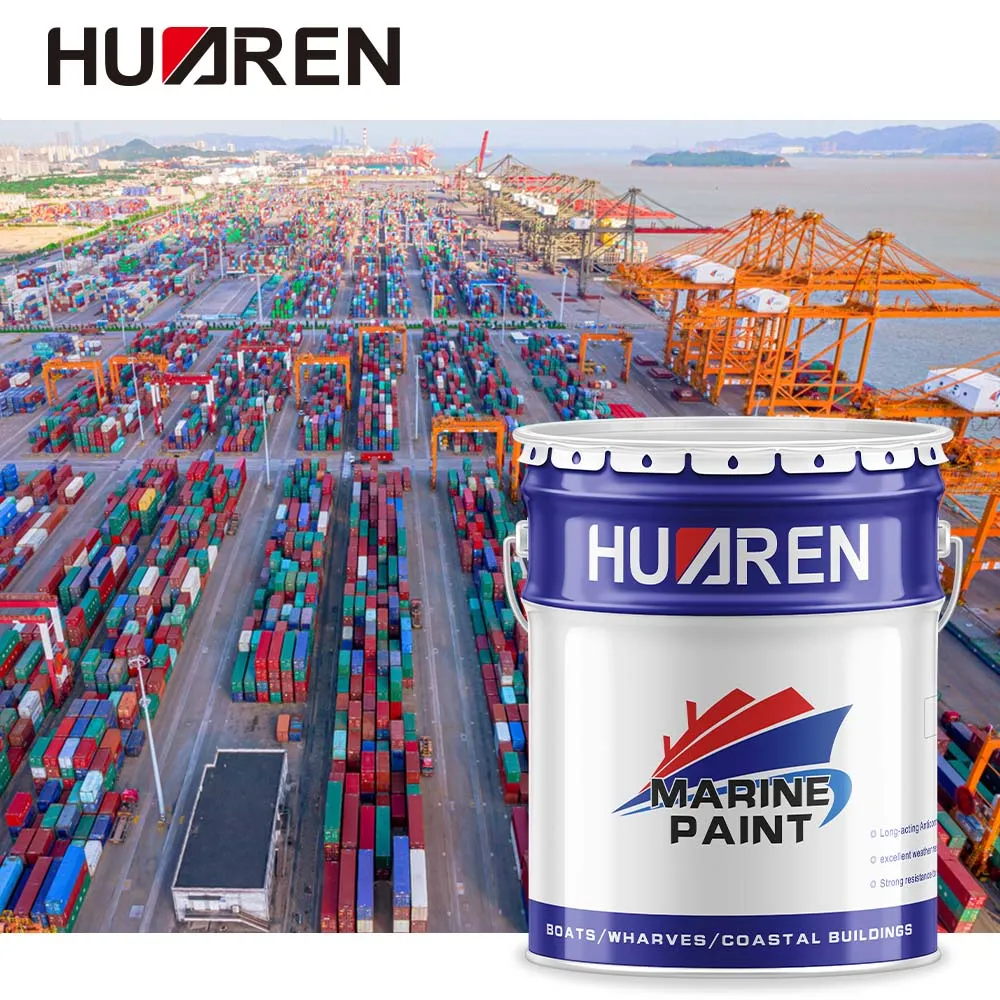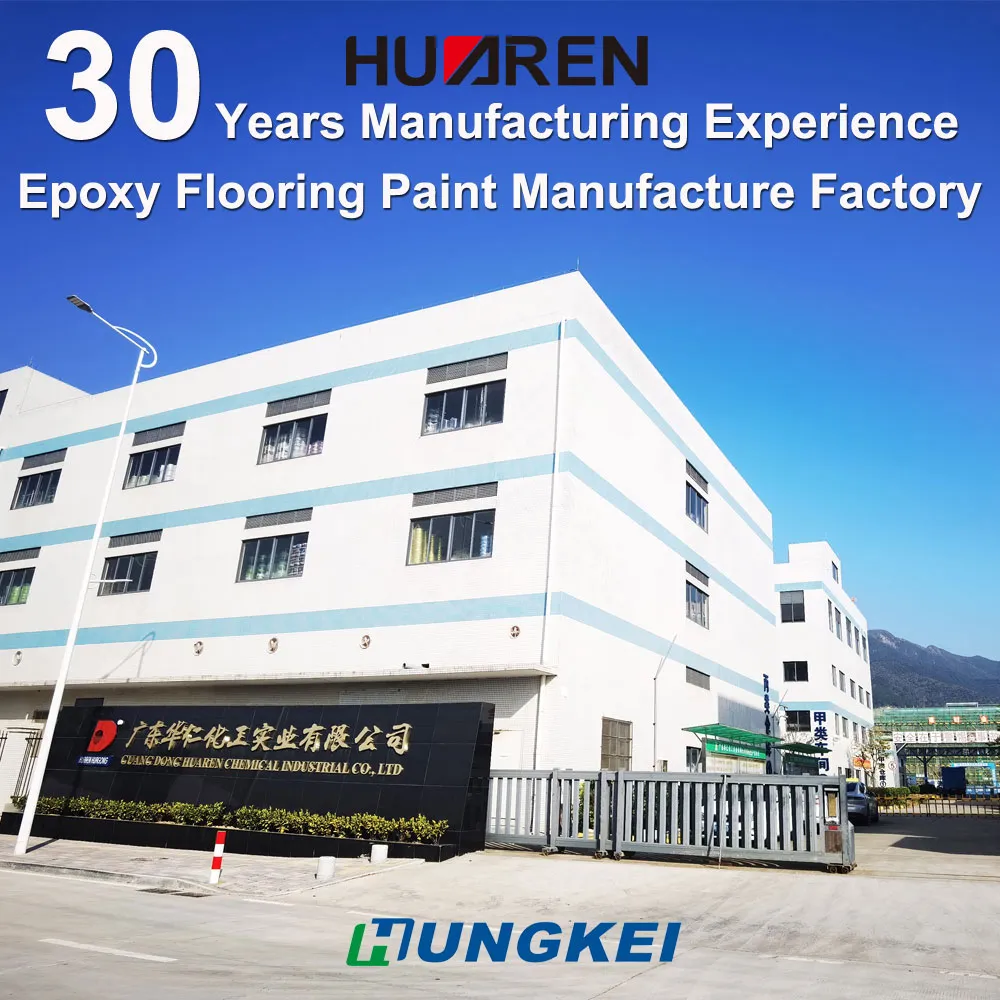Antifouling coatings play a vital role in the daily maintenance and management of ships. Especially for the underwater part of the hull, antifouling coatings can effectively reduce the water resistance of the ship, reduce fuel consumption, and increase the speed by preventing the attachment of marine organisms such as barnacles, shellfish, and algae, thereby improving the economy and performance of the ship. However, most antifouling ship coatings are designed for seawater environments, and their effects are particularly prominent in marine environments.
But with the diversification of ship navigation and the increase in freshwater routes, more and more ship owners are beginning to think: Can antifouling ship coatings be used in fresh water? What will be its effect in this environment? This article will explore the feasibility of using antifouling ship coatings in fresh water and provide scientific guidance for ship managers.

What is the role of antifouling ship coatings?
The main function of antifouling ship coatings is to prevent marine organisms from attaching to the underwater part of the hull. Marine organisms attached to the hull will not only increase water resistance, reduce the speed of the ship, increase fuel consumption, but also cause corrosion to the hull. Antifouling coatings prevent the attachment of these organisms through chemical reactions or physical means, usually in the following ways:
● Physical barrier: The surface hard film formed by antifouling ship coatings can effectively prevent biological attachment. This type of coating reduces the chance of attachment of attached organisms by forming a smooth coating on the hull surface.
● Chemical reaction: Some antifouling ship coatings release chemicals, such as metal ions such as copper and zinc, which are toxic and can inhibit the growth and attachment of marine organisms.
● Biological inhibition: Modern environmentally friendly antifouling coatings use non-toxic or low-toxic materials to reduce the growth and reproduction of attached organisms by changing the physical and chemical properties of the coating surface.
The most common antifouling ship coatings include self-polishing coatings, hard film coatings, copper-containing coatings, etc., which use different principles and technologies to ensure the cleanliness and corrosion protection of the hull.

What is the difference between freshwater and seawater environments?
There are significant differences between seawater and freshwater in terms of chemical composition and biological environment, which also has a direct impact on the effectiveness of antifouling coatings. Understanding these differences is crucial to evaluating the use of antifouling coatings in freshwater.
1. Salinity Difference
The salinity of seawater is much higher than that of freshwater, usually around 3.5%, while the salinity of freshwater is almost zero or very low. Salt has an important impact on the performance of antifouling coatings. Many antifouling coatings, especially copper-containing and self-polishing coatings, rely on salt in seawater to activate the antifouling function of the coating. Salt can accelerate the wear of the coating and help the coating to continuously release antifouling ingredients, such as copper ions, to maintain its effectiveness.
2. Aquatic Difference
The species of aquatic organisms in seawater and freshwater are significantly different. There are many species of organisms in seawater, and organisms such as barnacles, shellfish, and algae are more likely to attach to the hull. There are fewer species of organisms in freshwater, and there are relatively fewer attached organisms such as barnacles, which means that in a freshwater environment, the attachment pressure of aquatic organisms on the hull is relatively small.
3. Water Temperature and Water Flow
The temperature of seawater is relatively stable and diverse, especially in deep sea areas, where the change of water temperature is not as drastic as that in freshwater areas. The temperature of freshwater fluctuates greatly, especially in some lakes or rivers, where seasonal changes have a greater impact on water temperature. The strength of the water flow is also different. The water flow in freshwater rivers may be faster, while the water flow in lakes is relatively still, which will affect the effectiveness of antifouling marine coatings.
How does antifouling coating perform in freshwater?
The effect of antifouling coatings in freshwater is not as ideal as in seawater. The main reasons are as follows:
1. The release mechanism of the coating is not applicable
Many antifouling coatings, especially copper-containing coatings and self-polishing coatings, rely on salt in seawater to activate the antifouling function of the coating. In seawater, copper ions and other harmful substances are slowly released to inhibit the growth and attachment of aquatic organisms. However, the salt content in freshwater is low, and the release rate of metal ions such as copper is slow, which greatly reduces the antifouling effect of these coatings in freshwater environments.
2. Low bioattachment pressure
As mentioned earlier, there are relatively few species of organisms in freshwater, and the bioattachment pressure is low. Therefore, even if the antifouling effect of the coating is reduced, the types and number of attached organisms are relatively small, which reduces the actual demand for antifouling coatings.
3. Aging and loss rate of coatings
In freshwater, the aging rate of coatings may be faster due to the fluidity and temperature changes of the water body. Especially for self-polishing coatings, the wear rate of coatings will be faster in freshwater environments with faster water flow, resulting in premature attenuation of antifouling effects. In addition, hard film antifouling coatings of coatings may lose certain protective functions in freshwater environments because this type of coating requires a longer period of stable water flow to maintain its effectiveness.

Which antifouling coatings are suitable for freshwater?
Although the effect of antifouling marine coatings in freshwater is generally poor, it does not mean that all coatings cannot be used in freshwater. In fact, some antifouling coatings suitable for seawater environments may still have certain effects in specific freshwater environments, especially in the following cases:
1. Copper-free environmentally friendly coatings
Environmentally friendly antifouling coatings (such as copper-free coatings) do not rely on the release of copper ions, but reduce the attachment of aquatic organisms by changing the physical properties of the coating, such as surface smoothness. This type of coating is not affected by salinity, so it can be used in freshwater, and its effect is relatively stable, suitable for use in freshwater environments with low biological attachment pressure.
2. Hard film antifouling paint
Hard film antifouling paint reduces the attachment of aquatic organisms by forming a coating with a higher hardness. Although this kind of paint is more effective in seawater, it is also relatively effective in antifouling when used in freshwater, especially for algae and other lightly attached organisms.
3. Paints with strong antifouling properties
Some specially formulated antifouling marine paints, although not relying on copper ions or self-polishing mechanisms, have surface treatment technology that can effectively prevent biological attachment. Although these paints have relatively weak antifouling effects, they are still suitable for ships in freshwater.
How to use antifouling marine paints in freshwater?
When using antifouling marine paints in freshwater, shipowners can adopt the following strategies to ensure the effectiveness of the paint:
1. Choose the right paint
Given the small number of attached organisms in freshwater environments, choosing environmentally friendly, hard film-type or antifouling paints is a good choice. Avoid using paints that rely on the release of copper ions or other metal ions, which are generally not effective in freshwater environments.
2. Regular inspection and maintenance
Although the effect of antifouling coatings in freshwater may not be as long-lasting as in seawater, regular inspection and maintenance are still essential. Especially in waters with strong mobility such as freshwater rivers and lakes, the coating wears and ages faster and needs to be repainted and repaired regularly.
3. Rationally evaluate the need for antifouling
In freshwater environments, the antifouling needs of ships are relatively low. Shipowners should evaluate whether antifouling coatings need to be used throughout the journey based on actual conditions, or only when the ship frequently passes through areas with aquatic organisms attached.
4. Keep it clean
Even in freshwater environments, organisms such as dirt and algae may still accumulate on the surface of the hull. Therefore, regular cleaning of the hull is still an essential task. By keeping the hull clean, the service life of the coating can be extended and the consumption of antifouling ship coatings can be reduced.

With over 30 advanced production lines and decades of expertise, Huaren Chemical Industry Co., Ltd. is a trusted supplier of high-quality industrial coatings and resins. Based in China, we provide a broad selection of products, including epoxy paints, alkyd coatings, nitrocellulose paints, and more. Our solutions are widely used in shipbuilding, petrochemicals, and construction projects worldwide. Buyers can benefit from our competitive pricing, wholesale discounts, and customizable options to meet their specific needs. If you are seeking cost-effective, high-performance coatings, Huaren Chemical is the right partner. Get in touch with us for a personalized quote and explore our latest promotions!

